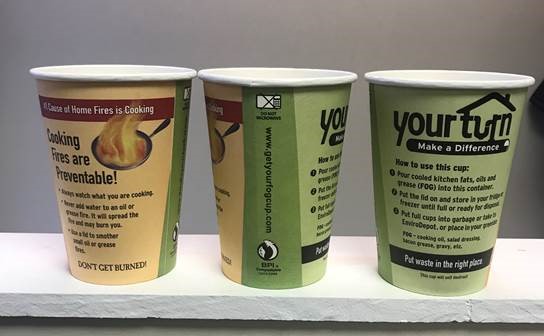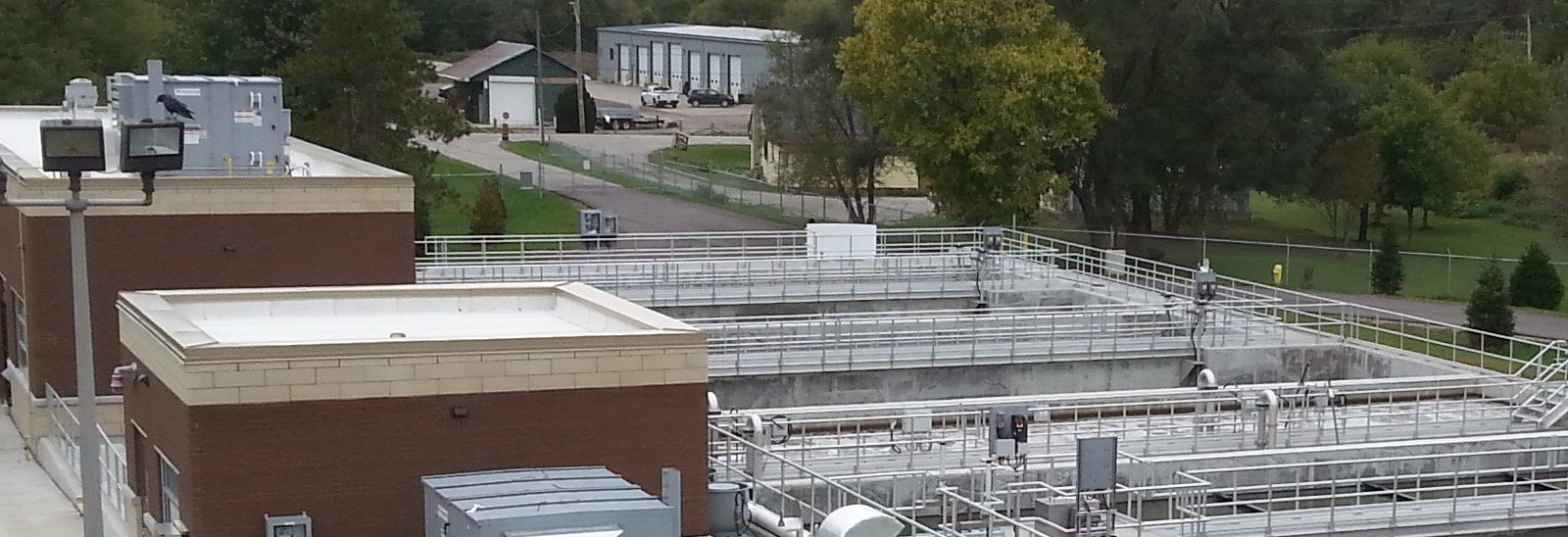Sewer Use By-Law Enforcement
Oxford County owns and operates all wastewater collection systems and treatment facilities within Oxford County.
All collection systems are operated by Oxford County staff, with the exception of the systems in Woodstock and Tillsonburg, which are operated by the City of Woodstock and the Town of Tillsonburg, respectively.
The Oxford County Biosolids Management Master Plan (BMMP) requires adherence to the Oxford County 6270-2020 Modernized Sewer Use By-law.
The County Sewer Use By-law staff collect "grab" or "composite" samples of several industrial and commercial discharges into the sanitary sewers to ensure compliance with the By-law. Unusual conditions such as higher than usual flows, unusual colour, large volumes of high solids or oil and grease waste streams, etc. can damage the wastewater collection system and cause upsets to the wastewater treatment facilities.
Industrial, Commercial, Institutional Information
Discharger Information Report-Short Form
Discharger Information Report- Long Form
| Septage Haulers |
|
Septage haulers that dump into Oxford County Wastewater Treatment Plants must meet the following conditions:
Unacceptable wastes include, but are not limited to:
|
More Information
| Residential Oil and Grease |
Why is oil and grease a problem?Fats, Oils and Grease (FOG) can cause serious problems for the sanitary sewer collection system. FOG can clog the flow in drains and sewers. Sewer pipes blocked by grease are an increasingly common cause of sewage overflows. Grease that is poured down the sink drain is often a warm liquid. It may not appear harmful but as the liquid cools, the grease solidifies and causes buildup inside the pipes, becoming a hardened mass. The buildup restricts the flow of sewage and clogs the pipes. The consequences of pouring grease down the drain can be:
Each year, a considerable amount of time and money is spent cleaning clogged pipes throughout the County. Where do fats, oils and grease come from?Grease is a common by-product of cooking and is the term used for animal fats and vegetable oils. It can be found in the following:
What can you do to help?
What is a FOG cup?
The FOG cup is for households to store cooled kitchen fats, oils and grease for disposal. Simply follow these three easy steps to help keep your fats, oils and grease out of sewer pipes:
FOG cup pick-up locationsOxford County residents can pick up FOG cups free of charge at:
|
| Toilets are not trash cans |
Did you know?
How the sanitary sewer system worksEverything flushed down your toilet or household sink goes to our sanitary sewer system. The sanitary sewer system is a series of underground pipes that transport sewage to a wastewater treatment facility. There, the sewage is treated to a regulated standard and then released into local rivers or lakes. Help minimize impacts on the environmentSometimes waste items can pass through the sewage treatment plant and end up in streams, rivers and lakes. It’s extremely important to keep medicines and household wastes out of the toilet and dispose of them properly. What should I do?Flush the right stuffMake sure you only flush toilet paper down your toilet. Our sewage system isn’t designed to handle anything else. Even items that claim to be flushable should be disposed of in another manner. Help prevent back-ups and overflowsFlushing the wrong things down your toilet can block sewer pipes. This may create sewer backups and lead to basement flooding. It can also cause sewage to overflow into local rivers and lakes. Know how to correctly dispose of items PUT THESE ITEMS IN THE GARBAGE:
PUT THESE ITEMS IN THE COMPOSTER
TAKE TO A SPECIAL WASTE DEPOT
DISPOSING OF MEDICINE
DISPOSING OF HOUSEHOLD SPECIAL WASTE (HSW)HSW is any material that is corrosive, flammable, ignitable or reactive – and includes household items such as bleach, cleansers, nail |
| Sink are not trash |
Did you know?
What is a food waste grinder?A food waste grinder is an appliance that is installed beneath the kitchen sink to grind food wastes into small particles, which are then discharged into the sewer system with the aid of tap water. Food waste grinders offer convenience, allowing for the immediate disposal of kitchen food waste down the drain. However, this convenience needs to be balanced against the initial capital cost, maintenance and eventual replacement of the food waste grinder, and potential clogging of our sewer system. Why are they bad?Food waste grinders can cause blockages in sewer pipes and pumping stations because they increase food particles and grease. Added organic waste to our sewer system means added loads to treat at waste facilities. This directly increases operating costs and in the end increases taxes for the municipality. Food waste grinders don’t really solve any waste problems, they just shift them to the wastewater treatment facilities. What you should do:
Cost consciousIt has been estimated that one household in one year can use up to 4,000 litres of water to flush organics down a food waste grinder. This puts an unnecessary strain on the local water supply and increases your monthly water bill. Other methods of organic waste disposal are not quite as hard on treatment facilities. More maintenance to sewage treatment Cost to treat food waste grinder = $$$ per tonne By-lawsTowns, municipalities and cities have by-laws in place that limit the amount of solids you can put into the sewer system. In using a food waste grinder, you are likely putting yourself in contravention of the sewage by-law limits. Food waste grinders may be prohibited in your area. Be sure to check your local by-law regulations. |
| Draining your pool or hot tub |
Did you know?
Chlorinated water and saltwater poolsSaltwater and chlorinated pools contain chemicals needed to keep them clean and safe for swimming. These chemicals include chlorine/bromine, salts, copper-based algaecides, nonylphenols and nonylphenol ethoxylates. These chemicals are deadly to the fish and other organisms that live in our creeks, rivers and lakes. Never drain your pool or hot tub if there are chemicals present in the water. Your responsibilityAs the owner of a private swimming pool, hot tub or spa, you and any pool service provider must maintain and operate it in compliance with your local Sewer Use Bylaw. Your city or municipality sets out requirements for the proper operation, maintenance and seasonal closure of pools, hot tubs, and spas that will protect the area’s water quality, and ultimately your drinking water. You and your hired pool service provider are legally obligated to report a spill to provincial and municipal authorities if your pool water has gone into a stream, river, lake or storm sewer systems without proper treatment. What you should doChlorinated water:
Salt water:
The difference in sewer systemsSanitary sewer - This system collects sewage and wastewater from toilets and sinks in your home. This water goes to a wastewater treatment plant where it is treated. Storm sewer - This system collects rainwater, melted snow, and surface water through storm grates that drain directly into the nearest creek, river or lake. This water is NOT treated. Remember: storm water is not treated before it reaches your local water source. The chemicals you put down the storm drain go directly into our rivers and creeks. |
| Dental Safety |
|
Proper disposal and discharging to sanitary sewer in dental offices. Did you know?
What should my office be doing?
What shouldn't my office be doing?
Amalgam waste includes:
Categories of wastes from dental officesMERCURY CONTAINING WASTES BIOMEDICAL/PATHOLOGICAL WASTES SILVER-CONTAINING WASTES LEAD-CONTAINING WASTES |
Oxford County reminds residents that wet wipes, even those labelled “flushable,” are not flushable and cost millions of dollars in damage each year to municipal wastewater systems. Please throw wet wipes and flushable wipes in the garbage, not in the toilet.
Read County Council Report No. PW 2020-02
Oxford County supports the City of Kitchener and Ryerson University recommendations regarding single-use disposable wipes














